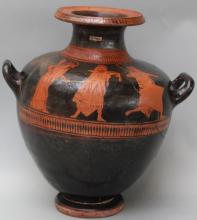Kathryn Topper. “Dionysos Comes to Thrace: The Metaphor of Corrupted Sacrifice and the Introduction of Dionysian Cult in Images of Lykourgos’s Madness,” Arethusa 48.2 (2015) 139-171
This article examines Athenian images of the madness of Lykourgos, a Thracian king who killed his son Dryas in a Dionysian frenzy. Drawing on an old observation that the images incorporate sacrificial elements, it suggests that the painters employed the metaphor of the corrupted sacrifice to make claims about Thrace and the nature of Dionysian worship. Furthermore, the article refutes a previous claim that Lykourgos’s savagery is a consequence of his Thracian ethnicity, arguing instead that his violent act should be understood within the context of the Dionysian arrival myth in which it is situated.
View PDF
(631.99 KB)
